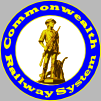Introduction to Airbrushing
with Eric Lalonde
1. Make sure you have the right airbrush for the job. If not, this will help guide you into the right choices for your particular application, and for those of you considering airbrushing; hopefully this helps you get off on the right foot.
2. Airbrushing is not a graduating process. What I mean is you don’t go from one airbrush to the next. You need to figure out what airbrush is best suited for your application and that is the airbrush you learn to use.
Airbrushes are made for different applications.
If your application calls for 2 types of airbrushes, but your budget only allows for one, which do you choose? You just need to manipulate 1 of the airbrushes to work both applications. So you are better off with the better airbrush, and manipulate for both applications.
TERMINOLOGY FOR AIRBRUSHES
There are 3 basic terms:
- Action
- Mix
- Feed
Action means what happens at the trigger. Conventional airbrushes trigger is 90% of the time mounted on top of the airbrush.
Single vs. Dual Action:
Single Action-push on trigger which actuates air flow and you adjust paint pattern by turning dial which adjusts from fine to wide.
Dual or Double Action: push on trigger is the first action. Pull back on trigger is the second action which controls paint flow.
Single Action is good all purpose airbrush and gives good uniform coat of paint. Great for large area application such as ground cover, painting lawn chairs, etc.
Single action generally is cheaper and is easier to use because of less moving parts.
Double action is good when you want varied paint lines. What you have with a double action airbrush is a fine tuned spray can.
Mix:
2 different types of mix:
- Internal
- External
Airbrushes spray dots, like pixels on a computer or TV screen.
Internal- Air and color mix inside the airbrush. In order to spray dots, it atomizes the color. So air and color have to come together for that atomization process to work.
External: Air and color mix outside the airbrush.
There are only 2 readily available external mix which are a Paasche H, and a Badger 350. Most external mix are bottom feed airbrushes.
External mix creates a larger/coarser dot pattern. So if you want to paint a wicker chair, model railroad terrain, base coats on house models, things that require larger volumes of paint, than a external airbrush would be the right choice.
Internal mix goes back to the dot pattern we spoke about. It is a high resolution airbrush, why, because it sprays finer dots. It is easier to have smaller dots to manipulate vs larger dots you can’t. You can never shrink external mix dots down in size. However, you can spray more internal mix dots. So you can see why the choice for most modeling applications is an Internal mix.
Feed:
This refers to where color enters the airbrush.
- Bottom feed
- Gravity Feed
- Side feed
- Dual feed (Badger exclusive)
Bottom feed:
- Large color application bottle
- Generally needs higher psi (18 to 20psi)
Gravity Feed:
- Color well which gravity feeds color
- Uses lower psi (8 to 12psi)
Side feed:
- Uses color cup or bottle
- Almost went away totally. (Most common use was photo re touching which needed to be straight up and down so the cup needed to swivel.
- Now making a comeback within the automotive field for custom paint applications. Benefit is that the color cup, while getting in close to your work surface, is not in your line of sight.
Choice, because of the scale we work with, gravity feed maybe the best choice. This gives you maximum control which will get you optimum results.
Bottom feed is generally 18-20psi. Solvent base vs. water base will spray at different psi. Bottom feed airbrushes force us to work at a faster pace do to high psi and giving less control over the tool.
Gravity feed is generally 8-12psi. Gravity pulls paint into tool so control becomes much greater.
Same nozzle/same needle between to airbrushes, however, performance is different between gravity and bottom feed do to different psi use.
Gravity feed also drastically reduces paint waste. Only need a few drops of paint sometimes.
Although paint goes much further through an airbrush than any other means of application.
Bottom feed airbrushes will clog more due to pressure, this is called” tip dry”.
T-shirt painters at the Mall spray at 50-60psi and are able to blow through a clogged airbrush. They can work at much higher pressures due to the material paint is being applied too. T-shirts are a porous material and is much more forgiving when paint is being applied. T-shirt painters do not generally clean their airbrush on a regular basis, which is ok do to the high psi they are using.







